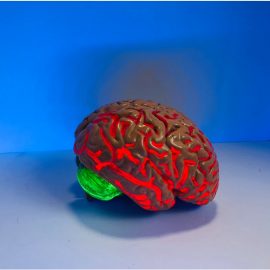

This article is an excerpt from the Shortform book guide to "A Short History of Nearly Everything" by Bill Bryson. Shortform has the world's best summaries and analyses of books you should be reading.
Like this article? Sign up for a free trial here.
How much do we know about the interior parts of Earth? What are the current theories?
Contrary to what you’ll see in sci-fi movies, nobody’s been to the center of the Earth. We can dig only so deep. So, scientists have to resort to some indirect ways of determining what’s far below the Earth’s surface.
Continue reading to learn what scientists believe and why.
The Interior Parts of Earth
Bryson explains that, although the surface of planet Earth cooled and solidified billions of years ago, the interior of the planet is still hot enough to be molten. Scientists speculate that nuclear fission in the Earth’s core may provide an ongoing source of heating, but we actually know relatively little about the interior parts of Earth because we can’t directly observe them—even the deepest mines and boreholes barely scratch the surface.
(Shortform note: There is debate in the scientific community about how nuclear heating of the core would work. As Bryson recounts, some scientists have attributed it to the fission of heavy elements like uranium. But others point out that if you get enough uranium together in one place to start a fission chain reaction, the reaction tends to use up the nuclear fuel rather quickly. They argue that if uranium fission was the heating mechanism, Earth’s core should have cooled off a long time ago. One alternative theory is that the heat comes from the gradual radioactive decay of large quantities of potassium-40 in the core. But scientists are divided on whether the core contains enough potassium for this to be possible.)
So, scientists have to resort to indirect methods of probing the Earth’s interior. One source of information is the data recorded by seismographs, which record vibrations from Earthquakes. By comparing readings from seismographs in different locations, scientists can identify regions of different densities within the Earth.
According to Bryson, scientists have deduced by this method that Earth has four distinct layers: The outer “crust” is solid and just a few miles thick. The “mantle” comprises most of Earth’s interior, and is essentially made of molten rock—most of the rock isn’t quite liquid but is hot enough to have a “plastic” consistency, somewhat like modeling clay. The “outer core” appears to be liquid metal, while the “inner core” is solid and probably also metallic.
(Shortform note: The model of Earth’s interior as four uniform concentric layers is arguably obsolete. As scientists have gathered more and more seismograph data over the years and used increasingly sophisticated computer models to piece it together, they’re developing a more detailed—and more complex—picture of the Earth’s interior. They’ve found thin layers between some of the traditional layers and an “inner inner” core inside the inner core. They’ve also found large lobes of dense material at the base of the mantle on opposite sides of the Earth. They’ve even mapped out inverted mountain ranges on the bottom of the continental crust that appear to be made partially of solid diamond.)

———End of Preview———
Like what you just read? Read the rest of the world's best book summary and analysis of Bill Bryson's "A Short History of Nearly Everything" at Shortform.
Here's what you'll find in our full A Short History of Nearly Everything summary:
- An accessible overview of the natural sciences
- A full history of the universe, Earth, and life as we know it
- A look at the unknowns and controversies that still exist in the sciences






